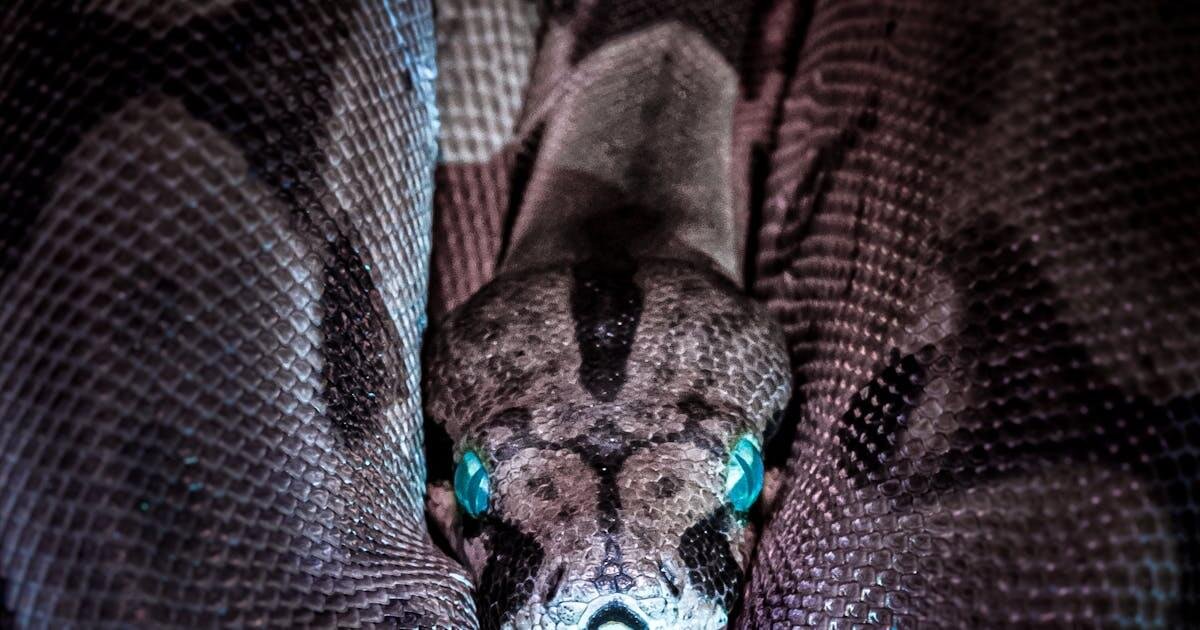The allure and fear of Earth’s most dangerous creatures have captivated humanity for centuries. These animals, often misunderstood, hold a power that demands respect and caution. Defining an animal’s danger is not solely about its capacity to inflict harm but also its potential impact on human populations and ecosystems. This article delves deep into the realm of the most dangerous animals, shedding light on their behaviors, habitats, and the sheer force they embody. Understanding these creatures is not about fostering fear but about nurturing respect and awareness for the intricate balance of nature.
What Makes an Animal “Dangerous”?
When we speak of “dangerous animals,” we’re not just referring to their ability to instill fear or their prowess in hunting. The criteria extend to their interactions with humans, the potency of their venom, and their behaviors that can lead to fatal encounters. An animal’s danger level is often gauged by the threat it poses to humans, either directly through attacks or indirectly through the spread of diseases. For example, a creature’s dangerous nature might stem from its defensive mechanisms, such as the venom of a snake or the sheer physical power of a large mammal.
The Intricacies of Danger
- Behavioral Patterns: Understanding the behaviors that contribute to an animal’s dangerous reputation is crucial. For instance, the territorial nature of certain species can lead to aggressive encounters with humans.
- Venom and Physical Strength: The biological weaponry of some animals, like venom or brute force, plays a significant role in their ability to harm.
- Human Impact: Often, the danger an animal poses increases due to human encroachment into their habitats, leading to more frequent and sometimes deadly interactions.
In the quest to coexist with these magnificent but potentially lethal creatures, it’s essential to delve into the essence of what makes them dangerous. This knowledge not only helps in mitigating risks but also in appreciating the complexity and beauty of these beings beyond the fear they might instill.
Top 10 Most Dangerous Animals in the World
The list of the most dangerous animals is a testament to the diversity and complexity of nature. These creatures, each unique in their habitats and methods of defense or attack, pose significant risks to humans for various reasons.
Box Jellyfish – The Silent Assassin of the Seas
The Box Jellyfish, often considered the most venomous marine animal, lurks in the waters of the Pacific and Indian oceans. Transparent and almost invisible in water, its tentacles are lined with nematocysts that can deliver venom capable of causing heart failure, paralysis, and death within minutes. The sheer potency of its venom, combined with its inconspicuous appearance, makes it a silent but deadly inhabitant of the seas.
Venom Potency: Capable of killing a human in less than five minutes. Survival Tip: Vinegar can neutralize the stings, but immediate medical attention is critical.
The African Elephant – A Gentle Giant or a Deadly Force?
Despite their portrayal as gentle giants, African Elephants are among the most dangerous animals, especially when provoked or threatened. Weighing up to 6,000 kg and standing up to 3 meters tall, they can become aggressive due to stress, habitat loss, or during musth (a period of increased testosterone in males). Human-elephant conflicts result in fatalities on both sides, emphasizing the need for coexistence strategies.
Conflict Statistics: Hundreds of human deaths are attributed to elephant attacks each year, primarily in Africa and Asia.
Saltwater Crocodile – Apex Predator of Waterways
Dominating rivers, estuaries, and coastal regions of the Indo-Pacific, the Saltwater Crocodile is the largest and most aggressive of its kind. With the strongest bite force of any living animal, they can take down almost any animal that enters their territory, including humans. Their ability to camouflage and explosively launch from the water makes them formidable ambush predators.
Bite Force: Up to 3,700 pounds per square inch (psi), rivaling that of the T-Rex.
Mosquito – The Tiny Killer
Perhaps surprising to some, the Mosquito is the deadliest animal on Earth, not due to its physicality but its role as a vector for deadly diseases like Malaria, Dengue Fever, and Zika Virus. These diseases result in millions of deaths annually, far surpassing those caused by larger, more fearsome animals.
Deadly Impact: Over 1 million deaths annually are attributed to mosquito-borne diseases.
Cape Buffalo – The Black Death
The Cape Buffalo, found in sub-Saharan Africa, is notorious among big game hunters as one of the most dangerous animals to hunt. Known as “The Black Death,” it is highly aggressive when threatened and has been known to ambush and attack pursuers. With its massive horns and herd mentality, it poses a significant threat not just to those who threaten it but also to unsuspecting passersby.
Fatal Encounters: Responsible for over 200 human deaths annually.
Poison Dart Frog – Deadly Beauty
The vibrant colors of the Poison Dart Frog serve as a warning in the wild: “I am toxic.” Native to Central and South American rainforests, their skin secretes a potent toxin that can cause heart failure, paralysis, and death. Interestingly, the frogs acquire their toxicity from their diet of ants, mites, and termites.
Toxic Fact: Just 2 micrograms of their toxin, the size of a grain of salt, is enough to be lethal.
The King Cobra – A Deadly Serenade
The King Cobra, the world’s longest venomous snake, can deliver enough neurotoxin in a single bite to kill 20 people or even an elephant. Residing primarily in the forests of India and Southeast Asia, it is revered and feared for its hood and intimidating stance. Its venom attacks the nervous system, causing pain, blurred vision, vertigo, drowsiness, and eventually paralysis.
Venom Potency: One bite can deliver up to 7 ml of neurotoxic venom.
Polar Bear – The Arctic Predator
As the largest land carnivore, the Polar Bear is an apex predator in the Arctic, primarily feeding on seals. With climate change reducing ice floes, their habitat and hunting grounds are diminishing, leading to increased encounters with humans. Their sheer size, strength, and predatory nature make them extremely dangerous.
Climate Impact: Changing ice patterns force closer encounters with human populations.
African Lion – The King of the Jungle
The African Lion, symbolizing strength and majesty, is a social feline that occasionally sees humans as prey. While attacks are rare, when they do occur, they are often fatal. Habitat encroachment and human-lion conflicts have increased, highlighting the need for conservation efforts to protect both parties.
Conservation Status: Listed as Vulnerable, with a decreasing population trend.
The Great White Shark – Terror of the Deep
Great White Sharks, often misrepresented in media, are not the mindless killers they are often portrayed to be. However, their size, power, and predatory efficiency command respect. Most shark attacks on humans are believed to be cases of mistaken identity, yet the power and unpredictability of these creatures earn them a spot on this list.
Misconceptions: Most shark attacks are not fatal, and sharks generally avoid humans.
Safety Tips and Preventing Dangerous Encounters
Interactions with dangerous animals can often be avoided with knowledge and caution. Understanding animal behavior, respecting their habitats, and maintaining a safe distance are key to preventing potentially deadly encounters. When in areas known for the presence of dangerous wildlife, always follow local guidelines and never provoke or approach wild animals. Unveiling nature’s most fierce beings, this article not only explores the top 10 deadliest animals but also offers to be insightful choosing a safe vacation destinations where you can admire these creatures from a distance.
The Role of Dangerous Animals in Their Ecosystems
Despite their danger to humans, these animals play crucial roles in their ecosystems. Predators help maintain healthy populations of prey species, preventing overgrazing and promoting biodiversity. Even the mosquito, despite its deadly impact on humans, serves as a significant food source for a variety of species.
Humans and Dangerous Animals: Finding a Balance
The increasing frequency of human-animal conflicts is a sign of our expanding footprint and the shrinking habitats of these dangerous creatures. Finding a balance requires understanding, respect, and concerted efforts towards conservation and coexistence.
Conclusion
The world’s most dangerous animals command a mix of fear, respect, and fascination. Understanding these creatures, their roles in ecosystems, and how to safely coexist with them is crucial for both our survival and theirs. As we delve into the mysteries of these formidable foes, we learn not only about their power and danger but also about the beauty and complexity of the natural world.
Respect for these creatures and their habitats, along with concerted conservation efforts, can ensure that future generations will also be able to marvel at these powerful symbols of the wild, understanding their place in the natural world and the delicate balance that allows both humans and dangerous animals to thrive.



